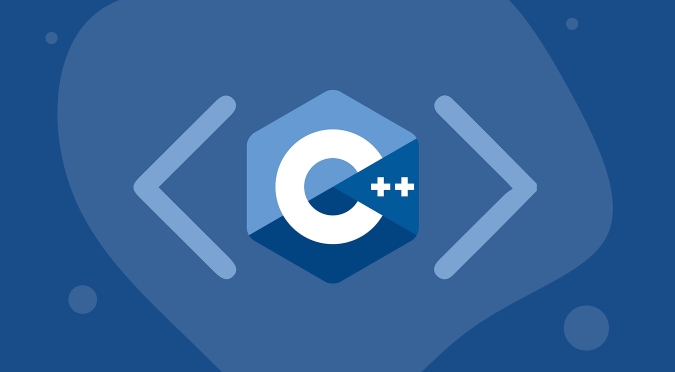What is the Standard Template Library (STL) in C ?
Jul 01, 2025 am 01:17 AMC STL is a set of general template classes and functions, including core components such as containers, algorithms, and iterators. Containers such as vector, list, map, and set are used to store data. Vector supports random access and is suitable for frequent reading; list insertion and deletion are efficient but access is slow; map and set are based on red and black trees, and automatic sorting is suitable for fast searches. Algorithms such as sort, find, copy, transform, and accumulate are commonly used to encapsulate them, and act on the iterator range of the container. The iterator acts as a bridge connecting containers to algorithms, supporting traversal and accessing elements. Other components include function objects, adapters, allocators, which are used to customize logic, change behavior, and memory management. STL simplifies C programming, improving efficiency and code reuse.

C's Standard Template Library (STL) is a common set of template classes and functions used to implement common data structures and algorithms. It is not an integral part of the C language itself, but it is widely integrated into the standard library and has become an important tool for modern C programming.

Container: "box" that stores data
The most core part of STL is containers, which are used to organize and store different types of data. Commonly used containers include vector , list , map , set , etc.

-
vectoris similar to dynamic arrays, supports random access, and is suitable for frequent read scenarios. -
listis a two-way linked list, with high insertion and deletion efficiency, but slow access to elements. -
mapandsetare based on red and black trees and are automatically sorted, suitable for occasions where quick searches and unique key values ??are needed.
For example: If you are dealing with a set of changing student scores, using vector may be more convenient than fixed-length arrays:
std::vector<int> scores = {85, 90, 78};
scores.push_back(93); // Add new scoreDifferent containers have different scenarios. When choosing, you should consider the access frequency and the cost of insertion and deletion operations.

Algorithm: Commonly used package
STL provides a rich set of algorithms (Algorithms), such as sorting, searching, copying, transformation, etc. These algorithms usually act on the iterator range of the container.
For example, sorting vectors using std::sort is very simple:
std::sort(scores.begin(), scores.end());
Common algorithms include:
-
find: Find whether an element exists -
copy: Copy the contents of one container to another -
transform: performs some kind of transformation operation on each element -
accumulate: sum or custom accumulation operations
The benefit of these algorithms is that they have been optimized and can be used with any compatible container, reducing the work of re-making wheels.
Iterator: a bridge connecting containers and algorithms
Iterators are objects used in STL to traverse container elements, a bit like pointers. It allows the algorithm to not know the internal structure of the specific container, but only needs to access the elements through an iterator.
You can think of an iterator as a "page turner" and view data page by page. for example:
for (auto it = scores.begin(); it != scores.end(); it) {
std::cout << *it << " ";
}STL supports multiple types of iterators, such as forward, reverse, constant iterators, etc. Understanding their differences can help write more efficient and secure code.
Other components: adapters, functors, allocators, etc.
In addition to the above three core parts, STL also includes some auxiliary components:
- Function Objects (Functors) : Objects that can be called like functions, often used to customize sorting or operation logic.
- Adaptors : Change the behavior of existing components, such as
stackorqueue, is adeque-based adapter. - Allocators : Responsible for memory management, and by default, it rarely needs to be implemented by itself.
Although these components are not as frequently used in daily development as containers and algorithms, they come in handy in advanced applications or performance optimization.
In general, STL provides efficient, flexible, and reusable data structures and algorithms, greatly simplifying C development work. Mastering its basic usage is a key step to becoming a qualified C programmer. Basically that's it.
The above is the detailed content of What is the Standard Template Library (STL) in C ?. For more information, please follow other related articles on the PHP Chinese website!

Hot AI Tools

Undress AI Tool
Undress images for free

Undresser.AI Undress
AI-powered app for creating realistic nude photos

AI Clothes Remover
Online AI tool for removing clothes from photos.

Clothoff.io
AI clothes remover

Video Face Swap
Swap faces in any video effortlessly with our completely free AI face swap tool!

Hot Article

Hot Tools

Notepad++7.3.1
Easy-to-use and free code editor

SublimeText3 Chinese version
Chinese version, very easy to use

Zend Studio 13.0.1
Powerful PHP integrated development environment

Dreamweaver CS6
Visual web development tools

SublimeText3 Mac version
God-level code editing software (SublimeText3)

Hot Topics
 C Initialization techniques
Jul 18, 2025 am 04:13 AM
C Initialization techniques
Jul 18, 2025 am 04:13 AM
There are many initialization methods in C, which are suitable for different scenarios. 1. Basic variable initialization includes assignment initialization (inta=5;), construction initialization (inta(5);) and list initialization (inta{5};), where list initialization is more stringent and recommended; 2. Class member initialization can be assigned through constructor body or member initialization list (MyClass(intval):x(val){}), which is more efficient and suitable for const and reference members. C 11 also supports direct initialization within the class; 3. Array and container initialization can be used in traditional mode or C 11's std::array and std::vector, support list initialization and improve security; 4. Default initialization
 Explain RAII in C
Jul 22, 2025 am 03:27 AM
Explain RAII in C
Jul 22, 2025 am 03:27 AM
RAII is an important technology used in resource management in C. Its core lies in automatically managing resources through the object life cycle. Its core idea is: resources are acquired at construction time and released at destruction, thereby avoiding leakage problems caused by manual release. For example, when there is no RAII, the file operation requires manually calling fclose. If there is an error in the middle or return in advance, you may forget to close the file; and after using RAII, such as the FileHandle class encapsulates the file operation, the destructor will be automatically called after leaving the scope to release the resource. 1.RAII is used in lock management (such as std::lock_guard), 2. Memory management (such as std::unique_ptr), 3. Database and network connection management, etc.
 What is high-frequency virtual currency trading? The principles and technical implementation points of high-frequency trading
Jul 23, 2025 pm 11:57 PM
What is high-frequency virtual currency trading? The principles and technical implementation points of high-frequency trading
Jul 23, 2025 pm 11:57 PM
High-frequency trading is one of the most technologically-rich and capital-intensive areas in the virtual currency market. It is a competition about speed, algorithms and cutting-edge technology that ordinary market participants are hard to get involved. Understanding how it works will help us to have a deeper understanding of the complexity and specialization of the current digital asset market. For most people, it is more important to recognize and understand this phenomenon than to try it yourself.
 C bitwise operators explained
Jul 18, 2025 am 03:52 AM
C bitwise operators explained
Jul 18, 2025 am 03:52 AM
The bit operator in C is used to directly operate binary bits of integers, and is suitable for systems programming, embedded development, algorithm optimization and other fields. 1. Common bit operators include bitwise and (&), bitwise or (|), bitwise XOR (^), bitwise inverse (~), and left shift (). 2. Use scenario stateful flag management, mask operation, performance optimization, and encryption/compression algorithms. 3. Notes include distinguishing bit operations from logical operations, avoiding unsafe right shifts to signed numbers, and not overuse affecting readability. It is also recommended to use macros or constants to improve code clarity, pay attention to operation order, and verify behavior through tests.
 What is a destructor in C ?
Jul 19, 2025 am 03:15 AM
What is a destructor in C ?
Jul 19, 2025 am 03:15 AM
The destructor in C is a special member function that is automatically called when an object is out of scope or is explicitly deleted. Its main purpose is to clean up resources that an object may acquire during its life cycle, such as memory, file handles, or network connections. The destructor is automatically called in the following cases: when a local variable leaves scope, when a delete is called on the pointer, and when an external object containing the object is destructed. When defining the destructor, you need to add ~ before the class name, and there are no parameters and return values. If undefined, the compiler generates a default destructor, but does not handle dynamic memory releases. Notes include: Each class can only have one destructor and does not support overloading; it is recommended to set the destructor of the inherited class to virtual; the destructor of the derived class will be executed first and then automatically called.
 Using std::optional in C
Jul 21, 2025 am 01:52 AM
Using std::optional in C
Jul 21, 2025 am 01:52 AM
To determine whether std::optional has a value, you can use the has_value() method or directly judge in the if statement; when returning a result that may be empty, it is recommended to use std::optional to avoid null pointers and exceptions; it should not be abused, and Boolean return values or independent bool variables are more suitable in some scenarios; the initialization methods are diverse, but you need to pay attention to using reset() to clear the value, and pay attention to the life cycle and construction behavior.
 Member Initialization Lists in C
Jul 19, 2025 am 02:03 AM
Member Initialization Lists in C
Jul 19, 2025 am 02:03 AM
In C, the member initialization list is used to initialize member variables in the constructor, especially for const members, reference members, class members without default constructors, and performance optimization. Its syntax begins with a colon and is followed by a comma-separated initialization item. The reasons for using member initialization list include: 1. The const member variable must be assigned value at initialization; 2. The reference member must be initialized; 3. Class type members without default constructors need to explicitly call the constructor; 4. Improve the construction efficiency of class type members. In addition, the initialization order is determined by the order of members declared in the class, not the order in the initialization list, so be careful to avoid relying on uninitialized members. Common application scenarios include initialization constants, references, complex objects and parameter-transferred constructions
 C vector get first element
Jul 25, 2025 am 12:35 AM
C vector get first element
Jul 25, 2025 am 12:35 AM
There are four common methods to obtain the first element of std::vector: 1. Use the front() method to ensure that the vector is not empty, has clear semantics and is recommended for daily use; 2. Use the subscript [0], and it also needs to be judged empty, with the performance comparable to front() but slightly weaker semantics; 3. Use *begin(), which is suitable for generic programming and STL algorithms; 4. Use at(0), without manually null judgment, but low performance, and throw exceptions when crossing the boundary, which is suitable for debugging or exception handling; the best practice is to call empty() first to check whether it is empty, and then use the front() method to obtain the first element to avoid undefined behavior.






